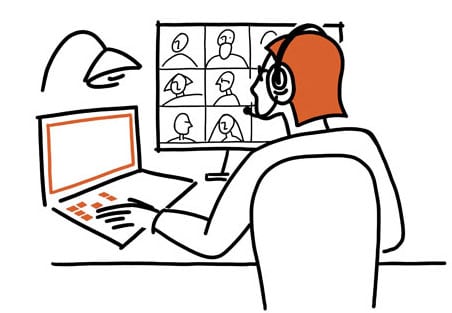In the globally connected world of today, variation is a defining feature of our public educational systems. As students from many cultural and linguistic backgrounds enter schools across the globe, it is critical to prioritize good communication. Language obstacles can cause inequalities in educational achievements as well as limit social integration and learning. But cutting-edge approaches like remote interpreting are dismantling these obstacles and promoting diversity in education like never before.
Real-time interpretation services can be facilitated from a remote location using technology through remote interpreting, commonly referred to as teleinterpreting or video remote interpreting (VRI). With the help of a trained interpreter, people who speak multiple tongues can interact efficiently with this method. While there are several applications for remote interpretation, its significance in education cannot be overstated.
Strengthening Inclusion and Availability
Institutions can improve accessibility and inclusion in learning environments by implementing remote interpreting. Language hurdles frequently prevent students from fully participating in the curriculum, especially those who are English language learners (ELLs) or members of linguistic minorities. Through the use of remote interpreting, teachers and peers may make sure that these students can fully participate in class discussions, comprehend the course materials, and receive the support they need. As a result, every student feels appreciated and has more opportunities to achieve in a more inclusive educational atmosphere.
Supporting the Participation of Parents
For parents/guardians who speak different languages from the school, remote interpreting is also essential in easing communication. Parental involvement is critical to student’s success, even though language barriers may make it difficult for educators and families to communicate. School districts can hold Individualized Education Program (IEP) meetings, parent-teacher conferences, and other essential interactions in a language that parents can comprehend by utilizing remote interpreting systems. As a result, parents are guaranteed to be actively involved in their child’s education, strengthening the bond between the home and the educational institution.
Getting Past Regional Barriers
The fact that remote interpreting can be used in educational settings regardless of location is one of its most prominent benefits. Institutions may find it challenging to provide interpreters in typical settings for kids who live far away or speak less common languages. These difficulties are resolved with remote interpreting, which links students and interpreters wherever they may be. This implies that students in a busy city can obtain explanation services of the same caliber as those in a small rural village.
Making Certain of Excellence and Expertise
Although there are many advantages to remote interpreting, professionalism, and quality control must always come first. If educational institutions want to guarantee accurate and dependable interpretation services, they should work with respectable interpreting services or hire qualified interpreters. To further improve the overall experience for instructors and students, it can be beneficial to offer educators tools and training on how to use virtual translation technologies.
Getting Used to Varying Educational Settings
Remote interpretation can be used in a variety of learning settings, such as hybrid models, online learning environments, and traditional classrooms, due to its adaptability. Remote interpreting easily fits into these settings to meet the language demands of students as educational institutions adopt digital tools and virtual instruction at an increasing rate. With the convenience of access to interpretation services, students can continue their education regardless of whether they are learning in person or virtually.
Last Thoughts
Finally, by removing language barriers and promoting inclusivity in classrooms across the globe, remote interpreting is transforming education. Educational institutions may make sure that language barriers don’t get in the way of social acceptance or academic achievement by using technology to link families, teachers, and students with qualified translators. To provide fair learning settings where every student has the chance to succeed, online interpretation will continue to be an essential tool as we embrace diversity and globalization in education.

